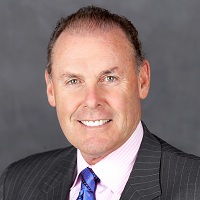Could Diversity Hiring Efforts Endanger Your Company?
Sometimes trying to do the right thing backfires, ending in an expensive lawsuit. Here are some thoughts on how business owners can protect their companies and themselves.


Diversity, equity and inclusion, or DEI, is a term used to describe policies and programs that promote the representation and participation of different groups of individuals. This includes people of different ages, races and ethnicities, abilities and disabilities, genders, religions, cultures and sexual orientations.
The awareness of the necessity to not only hire more diverse candidates but to include, train and promote these individuals has come front and center and is more important now than ever. However, when businesses make a good-faith effort to hire diverse employees, they may unwittingly be opening themselves up to lawsuits. And on the other hand, businesses that don’t try to diversify their workforce could face lawsuits as well. It’s quite a dilemma.
Lowenstein Sandler LLP’s Julie Levinson Werner, a noted employment law attorney, says adopting quotas of a fixed percentage of individuals in certain roles by a certain date based on race, gender or other characteristics is legally risky. In fact, this very issue is at the heart of the upcoming Supreme Court case Students for Fair Admissions Inc. v. President & Fellows of Harvard College. While this case deals with the legality of race-based admissions in the scholastic context, one can foresee the result extending to the broader workplace environment.

Sign up for Kiplinger’s Free E-Newsletters
Profit and prosper with the best of expert advice on investing, taxes, retirement, personal finance and more - straight to your e-mail.
Profit and prosper with the best of expert advice - straight to your e-mail.
Reminding us of the adage that “no good deed goes unpunished,” businesses that seek to create an inclusive workforce by advancing employees to meet certain quotas of diversity, rather than merit, could find themselves in legal jeopardy. And those businesses that do not incorporate DEI strategies could find themselves as defendants in a lawsuit that, if successful, could bankrupt the business and possibly the business owner personally.
So, What’s a Business Owner to Do?
This article is not intended to argue for one position or another. It is intended to bring the future into the present where the business owner “hopes for the best but plans for the worst” if moving away from merit-based hiring and promotion with a DEI focus to one singularly based on quotas. Yet, what if the business forsakes the DEI policies and programs that promote these new values, and uses merit-based criteria for promotion and advancement? It could find itself in harm’s way by the legal profession, who are gearing up to take on these cases even as this article is being written.
So how can a business hope for the best but plan for the worst? When carrying out the good intentions of diversity planning and hiring, businesses need an integrated business, estate planning and asset protection plan to protect them. This process involves retitling selected business and personal assets into legal structures that by their nature present significant legal hurdles to reaching such assets, absent a fraudulent transfer. In other words, it’s the process of keeping what you have worked for and earned out of harm's way.
There are many strategies to achieve integrated business, estate planning and asset protection: a HYCET Trust, domestic and foreign asset protection trusts, private retirement plans and IRA rescue plans, just to name a few.* In fact, sometimes a simple change in basic corporate structure can provide valuable protection, such as creating two classes of shares – voting and non-voting. Retain the non-voting shares and gift the voting shares to an irrevocable dynasty trust. If a lawsuit creditor can only reach your non-voting shares, he or she may be dissuaded from suing you in the first instance.
Cover Your Bases
Almost universally, an effective asset protection plan will consist not of one, but multiple strategies integrated into a holistic plan designed to achieve many benefits, including asset protection. That plan should serve several functions: protect your assets while you are alive, provide for the efficient transfer of your assets on your death, and mitigate to the maximum extent possible the amount of taxes owed. What that plan looks like, and which particular strategies are used, should always be tailored to the client.
Every client and business is unique , with its own circumstances. That is why it is crucial to work with an experienced asset protection attorney who can not only evaluate what steps you should take but also — perhaps more importantly — what steps not to take.
Be aware and take caution. These strategies should not be attempted if you have a foreseeable, expected or current lawsuit, or another legal claim. If so, these efforts could subject you to serious legal jeopardy and even violations of state and federal laws. Consult with a law firm that has extensive experience in this area of practice to determine if you are a candidate for integrated asset protection planning.
As the world continues to evolve and social and business paradigms are constantly in flux, successful business owners owe it to their business and themselves to promote strong inclusion and equity in their workforce while addressing the needs and merits of open positions.
Be prepared. Be proactive. Put an asset-protection plan in place today. Don’t let your DEI efforts cause your finances to DIE.
*Go to www.jmvlaw.com and view the library of videos describing many of these strategies.
Get Kiplinger Today newsletter — free
Profit and prosper with the best of Kiplinger's advice on investing, taxes, retirement, personal finance and much more. Delivered daily. Enter your email in the box and click Sign Me Up.

Jeffrey M. Verdon, Esq. is the lead asset protection and tax partner at the national full-service law firm of Falcon Rappaport & Berkman. With more than 30 years of experience in designing and implementing integrated estate planning and asset protection structures, Mr. Verdon serves affluent families and successful business owners in solving their most complex and vexing estate tax, income tax, and asset protection goals and objectives. Over the past four years, he has contributed 25 articles to the Kiplinger Building Wealth online platform.
-
 6 Stunning Waterfront Homes for Sale Around the US
6 Stunning Waterfront Homes for Sale Around the USFrom private peninsulas to lakes, bayous and beyond, Kiplinger's "Listed" series brings you another selection of dream homes for sale on the waterfront.
By Charlotte Gorbold Published
-
 Six Reasons to Disinherit Someone and How to Do It
Six Reasons to Disinherit Someone and How to Do ItWhether you're navigating a second marriage, dealing with an estranged relative or leaving your assets to charity, there are reasons to disinherit someone. Here's how.
By Donna LeValley Published
-
 Should You Still Wait Until 70 to Claim Social Security?
Should You Still Wait Until 70 to Claim Social Security?Delaying Social Security until age 70 will increase your benefits. But with shortages ahead, and talk of cuts, is there a case for claiming sooner?
By Evan T. Beach, CFP®, AWMA® Published
-
 Retirement Planning for Couples: How to Plan to Be So Happy Together
Retirement Planning for Couples: How to Plan to Be So Happy TogetherPlanning for retirement as a couple is a team sport that takes open communication, thoughtful planning and a solid financial strategy.
By Andrew Rosen, CFP®, CEP Published
-
 Market Turmoil: What History Tells Us About Current Volatility
Market Turmoil: What History Tells Us About Current VolatilityThis up-and-down uncertainty is nerve-racking, but a look back at previous downturns shows that the markets are resilient. Here's how to ride out the turmoil.
By Michael Aloi, CFP® Published
-
 Home Insurance: How to Cut Costs Without Losing Coverage
Home Insurance: How to Cut Costs Without Losing CoverageNatural disasters are causing home insurance premiums to soar, but don't risk dropping your coverage completely when there are ways to keep costs down.
By Jared Elson, Investment Adviser Published
-
 Markets Roller Coaster: Resist the Urge to Make Big Changes
Markets Roller Coaster: Resist the Urge to Make Big ChangesYou could do more harm than good if you react emotionally to volatility. Instead, consider tax-loss harvesting, Roth conversions and how to plan for next time.
By Frank J. Legan Published
-
 Why Homeowners Insurance Has Gotten So Very Expensive
Why Homeowners Insurance Has Gotten So Very ExpensiveThe home insurance industry is seeing more frequent and bigger claims because of weather, wildfires and other natural disasters.
By Karl Susman, CPCU, LUTCF, CIC, CSFP, CFS, CPIA, AAI-M, PLCS Published
-
 Going Through Probate? How to Find the Right Attorney
Going Through Probate? How to Find the Right AttorneyJust having the skills and experience to do the job isn't enough. The probate attorney you hire needs to have the right temperament for your particular case.
By John R. Silva, Esq. Published
-
 Widow's Penalty: Three Ways to Protect Your Finances
Widow's Penalty: Three Ways to Protect Your FinancesHigher Medicare premiums, smaller Social Security payments, bigger tax bills … Financial changes can hit hard when a spouse dies. How to counter the blow.
By Ashley Terrell, IAR Published